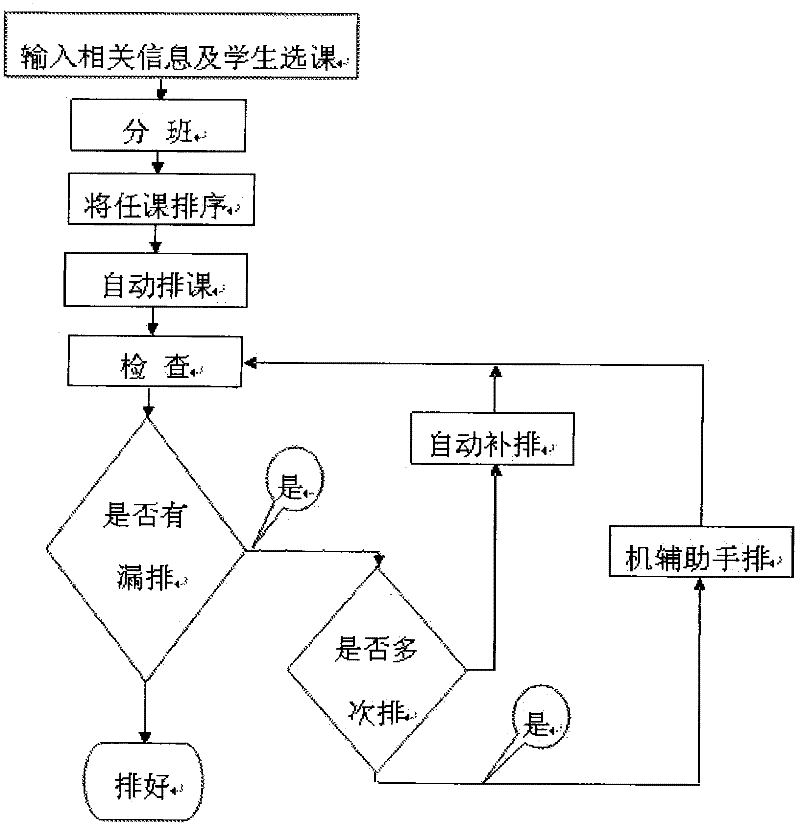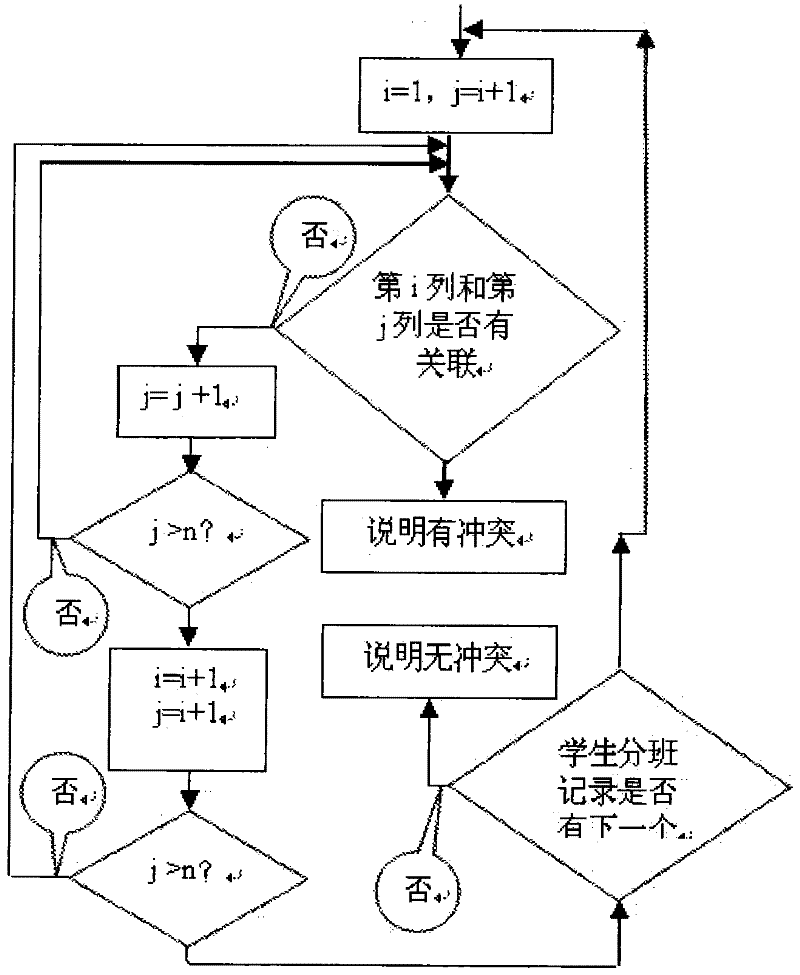Method for high-efficiency class grouping and course scheduling in multi-restraint condition
A multi-constraint and class division technology, applied in special data processing applications, instruments, electrical digital data processing, etc., can solve the problems of generating timetables, large space consumption and time waste of genetic algorithm scheduling, so as to facilitate statistics and view , reduce artificial effects
- Summary
- Abstract
- Description
- Claims
- Application Information
AI Technical Summary
Problems solved by technology
Method used
Image
Examples
example 1
[0034] When using the present invention to divide and arrange classes, such as figure 1 , figure 2 , image 3 , Figure 4 Said, a method for efficiently dividing and arranging classes under multiple constraints includes the following steps:
[0035] (1) Assignment: formulate and publish the semester course list, which is the module table in the database, and set the venue range, weekly class hours and allowable course schedule for each course, corresponding to the corresponding table in the database, for each student Allocate 100 points for the total power of selecting teachers, and students will give scores to each teacher when selecting courses;
[0036] (2) Class classification: Statistics on student selection information, that is, the student classification table, and classify according to the following regulations: a. Students with the same class selection in the same administrative class should be divided into one teaching class as much as possible, while taking into account...
example 2
[0042] The method of the present invention is used to carry out tests under different conditions and the same steps. The test steps are the same as those described in Example 1. The tests and results are shown in Table 1.
[0043] Table I
[0044]
PUM
 Login to View More
Login to View More Abstract
Description
Claims
Application Information
 Login to View More
Login to View More - R&D
- Intellectual Property
- Life Sciences
- Materials
- Tech Scout
- Unparalleled Data Quality
- Higher Quality Content
- 60% Fewer Hallucinations
Browse by: Latest US Patents, China's latest patents, Technical Efficacy Thesaurus, Application Domain, Technology Topic, Popular Technical Reports.
© 2025 PatSnap. All rights reserved.Legal|Privacy policy|Modern Slavery Act Transparency Statement|Sitemap|About US| Contact US: help@patsnap.com



